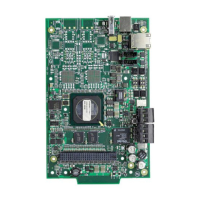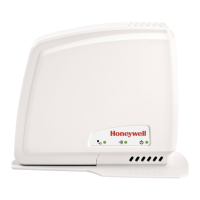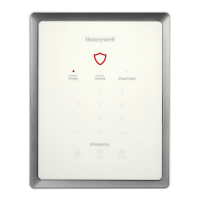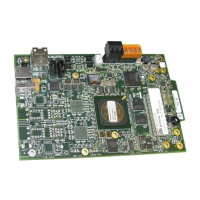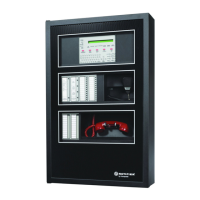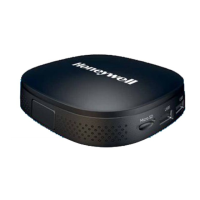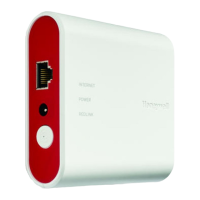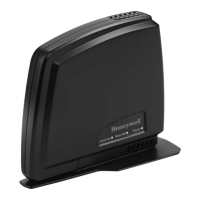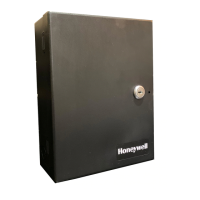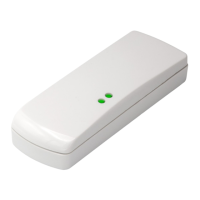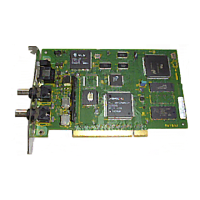
Do you have a question about the Honeywell Experion PKS and is the answer not in the manual?
| Communication Protocols | OPC, Modbus, Ethernet |
|---|---|
| Integration | Third-party systems |
| Scalability | Scalable from small to large-scale applications |
| Security | Role-based access control |
| Redundancy | Supports redundant servers, controllers, and network components |
Provides an overview of the major components of the PGM.
Discusses DPV1 support and HART enhancements for the PGM.
Depicts the non-redundant and redundant PGM topologies.
Illustrates the data flow through PGM components and blocks.
Details data communication between C300, PGM, slave devices, and HART modules.
Guides on understanding Experion capabilities for PGM installation planning.
Covers essential checks and precautions before installing the PGM.
Describes the physical assembly of the PGM module with its IOTA board.
Details the pin assignments for the PGM/IOTA DB9-F connector.
Provides step-by-step instructions for installing the PGM module.
Describes the process of powering on and starting up the PGM module.
Offers guidelines for Profibus cabling, including media redundancy.
Introduces the PGM as an interface module and its associated function blocks.
Provides steps to configure a PGM block in the Control Builder.
Details the procedure for configuring a secondary PGM for redundancy.
Explains how to convert a redundant PGM to a non-redundant one.
Lists state and command parameters for monitoring the PGM block.
Covers operations related to redundant PGM configuration and switchover.
Covers procedures for shutting down PGM modules.
Describes how to view PGM block station displays.
Introduces the Protocol Block as a field network interface.
Provides steps for configuring a Protocol Block.
Details configuring slave devices using the Profibus Network Configuration Tool.
Details configuring the master device in the network tool.
Guides on adding new GSD files to the configuration tool's library.
Explains how to group adjacent modules into a single logical unit.
Covers modifying field network configurations without interrupting process data.
Details how to export and import field network configurations.
Lists state and command parameters for monitoring Protocol Blocks.
Guides on monitoring master and slave devices online.
Describes Protocol Block station displays.
Introduces the Device Support Block (DSB) and its role in representing PROFIBUS devices.
Discusses DPV1 data record read/write configuration within DSBs.
Explains how DSB blocks process data upon loading.
Introduces Generic DSBs for configuring devices without specific DSBs.
Describes GENPADSB/GENPAGWDSB for PROFIBUS PA devices.
Introduces the DRIVEDSB for PROFIdrive applications.
Introduces the CEAGDSB for CEAG LB/FB Remote I/O family.
Introduces the Siemens AS-i Link DSB for AS Interface bus.
Introduces the Siemens ET200M DSB for Siemens devices.
Introduces the Turck Excom DSB for Turck Excom devices.
Provides guidelines for configuring various DSB types.
Details the configuration process for Generic DSB blocks.
Explains how to configure device-specific DSB blocks.
Discusses AO/DO channel initialization from user-defined values.
Provides instructions for configuring Process Data Collections (PDCs).
Explains how DSB blocks report alarms based on diagnostic data.
Lists state and command parameters for monitoring DSB blocks.
Introduces the PBHIOMB function block for PROFIBUS HART I/O modules.
Describes the PROFIBUS HART I/O channel (PBHCHANNEL) for monitoring HART digital data.
Explains the functions of the PBHIOMB block when activated.
Provides steps for configuring a PBHIOMB block.
Details the configuration process for a PBHCHANNEL block.
Lists state and command parameters for monitoring PBHIOMB blocks.
Lists state and command parameters for monitoring PBHCHANNEL blocks.
Describes PBHIOMB block station displays.
Describes PBHCHANNEL station displays.
Introduces the PIOMB as an interface between control strategies and PROFIBUS devices.
Describes the PROFIBUS I/O channel blocks used for logical I/O points.
Explains the actions performed by the PIOMB block in an ACTIVE execution state.
Provides steps for configuring a PIOMB block.
Details assigning a PROFIBUS channel to a PIOMB.
Lists state and command parameters for monitoring PIOMB blocks.
Describes PIOMB block station displays.
Provides guidelines for the initial load order of control strategy components.
Details the general procedure for loading a PGM function block.
Provides information on reloading PGM blocks and associated function blocks.
Identifies periodic checks to maintain PGM in good working condition.
Provides steps for replacing a non-redundant PGM.
Details replacing a redundant or secondary PGM.
Provides steps for replacing a non-redundant PGM IOTA board.
Details replacing a redundant or secondary PGM IOTA board.
Explains PGM behavior under various fault scenarios like power loss or communication loss.
Classifies faults based on severity and describes PGM behavior.
Provides checks to help isolate problems.
Identifies common problems and their solutions.
Defines the control building software for Honeywell Control Processor.
Defines the Series C form factor controller executing Experion strategies.
Defines the default communication medium for Series C components.
Defines an executable software object performing a specific task.
Defines a block representing a PROFIBUS field device (slave device).
Defines the interface module connecting C300 Controller to Profibus devices.
Defines the block representing a physical I/O PROFIBUS device.
Provides contact information for feedback and support.
Guides on reporting software security vulnerabilities to Honeywell.
